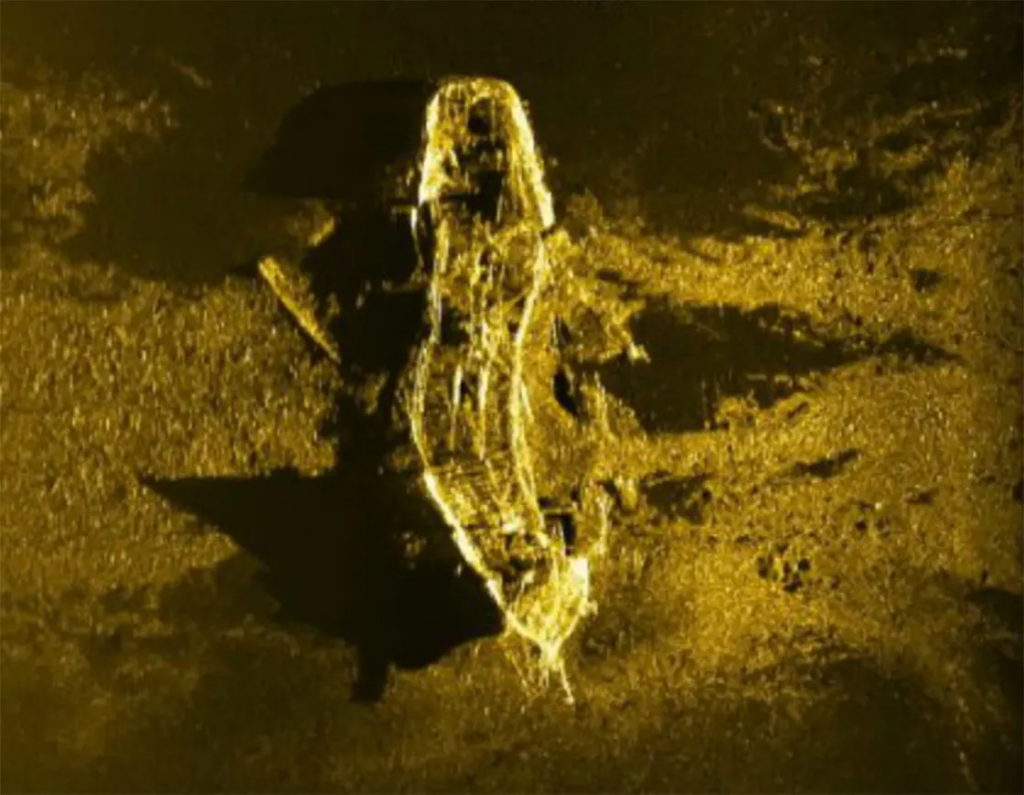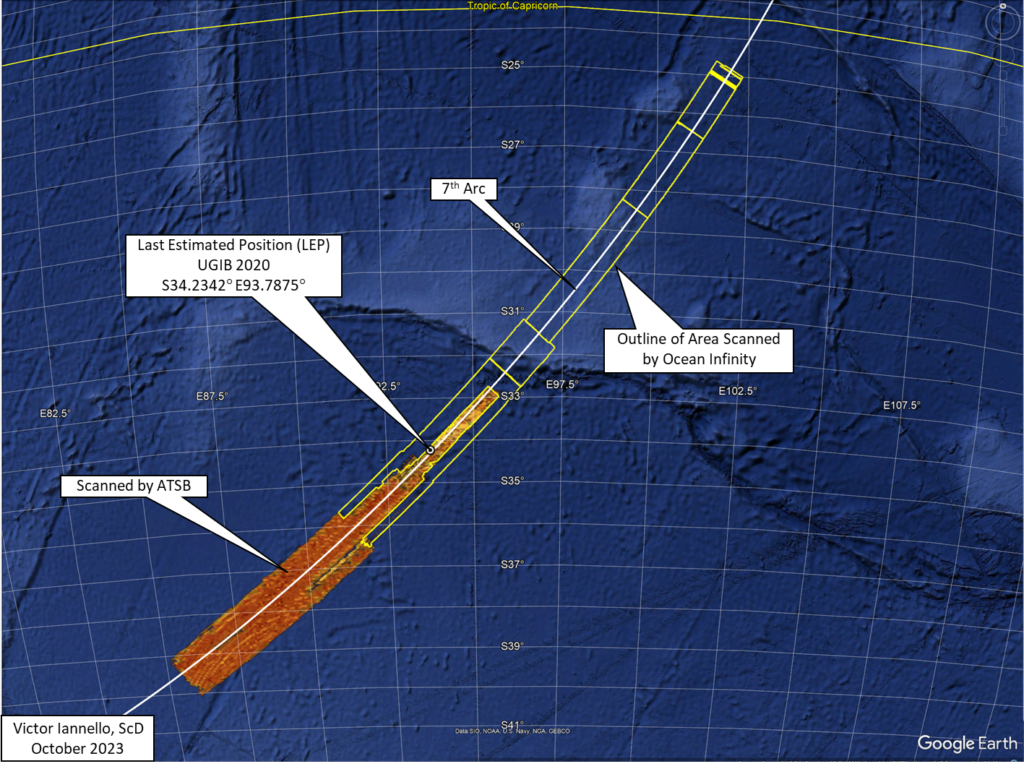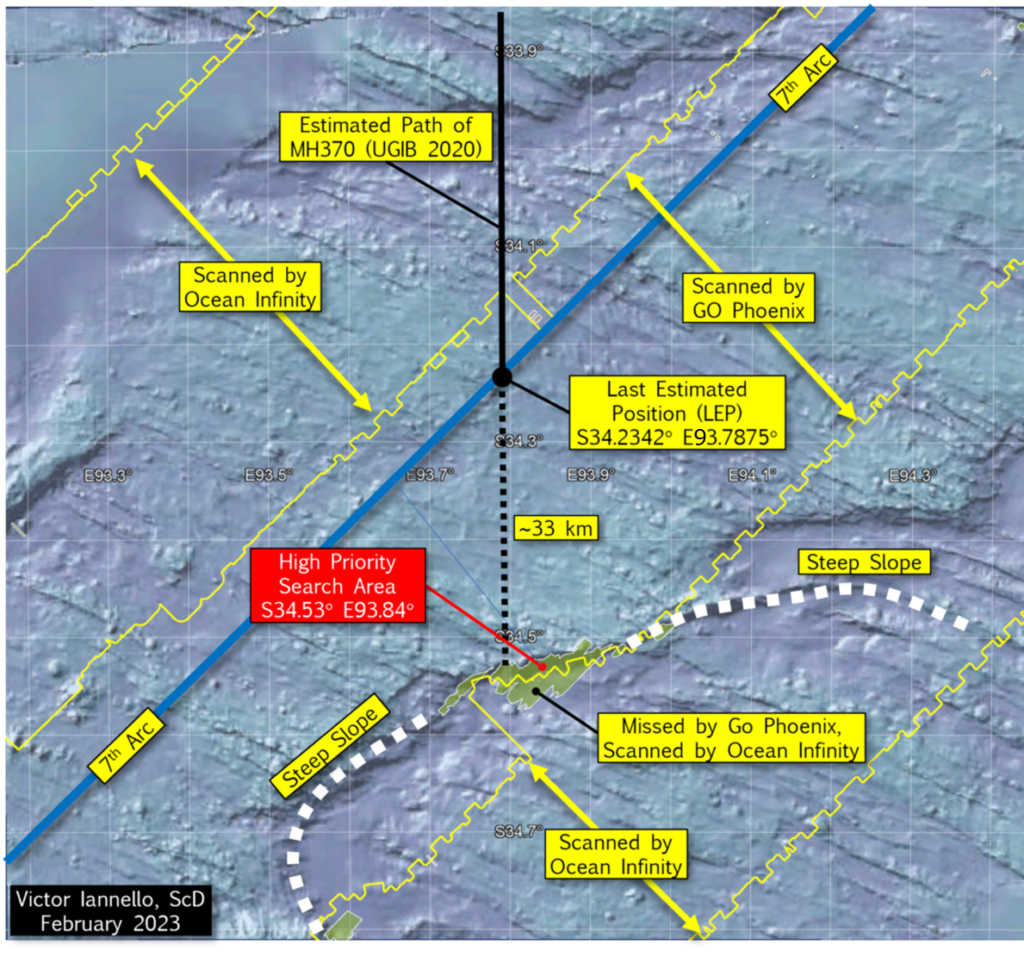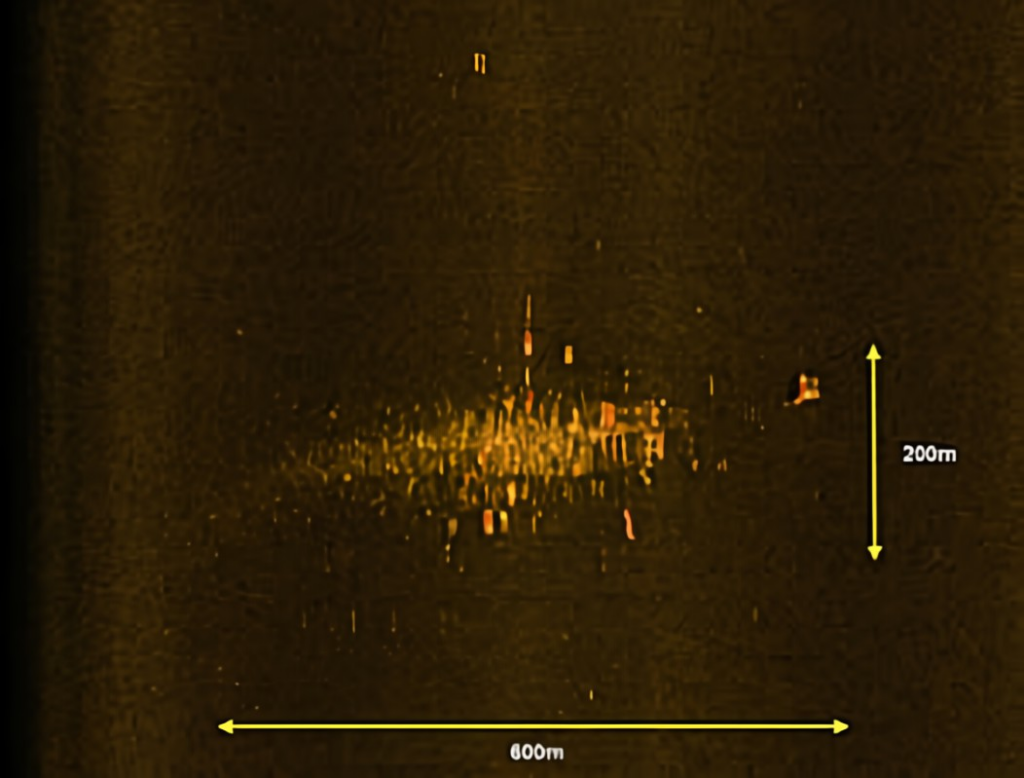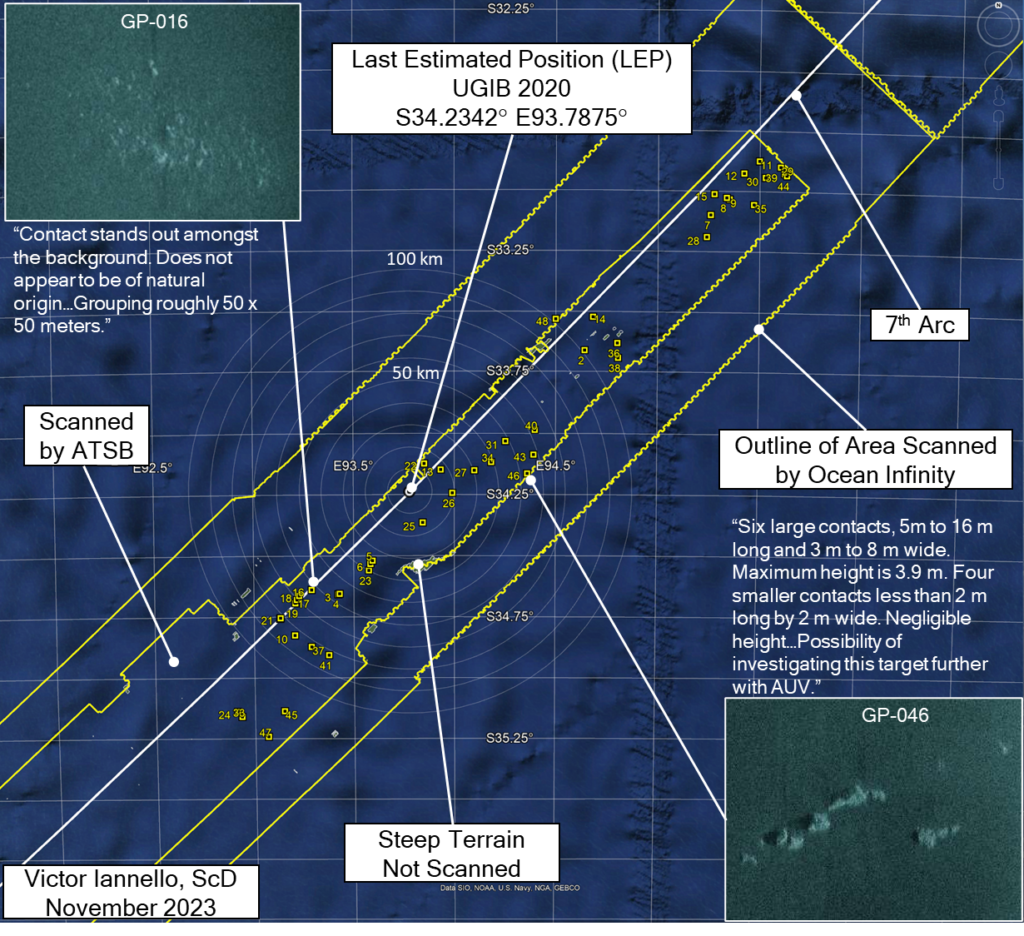
Last year, in March 2024, at a gathering in Malaysia on the 10th anniversary of the disappearance of MH370, family member V.P.R. Nathan presented several slides highlighting Ocean Infinity’s willingness to conduct another subsea search for the debris field of the aircraft. The search area proposed at that time extended along the 7th arc from about 33°S to 36°S, and out to about 45 NM (83 km) on either side of the arc. Ocean Infinity also announced plans to “fill-in” areas that were previously searched that had low quality or missing data due to equipment failures or challenging terrain. The proposed search area surrounded the “Last Estimated Position” (LEP) from UGIB 2020, which was designated the “IG Hotspot” in the slide. The proposed search area also incorporated our High Priority Search Area due south of the LEP that was missed by the previous searches by the ATSB and Ocean Infinity due to the steep sloping terrain in that area.
More recently, there were the following developments:
- On December 20, 2024, the Malaysian government agreed “in principle” to a new search effort with Ocean Infinity, indicating the start of formal negotiations.
- On March 19, 2025, Malaysia’s Transport Minister Anthony Loke announced that the Malaysian cabinet had agreed to the terms and conditions of the agreement with Ocean Infinity under a “no find, no fee” arrangement, with a payment of $70 million if successful.
- On March 26, 2025, a group representing the families of MH370 victims announced that a no-find, no-fee contract was signed by Malaysia and Ocean Infinity. Despite this announcement, there has been no official confirmation from either Malaysia or Ocean Infinity.
In February 2025, with no signed contract in hand, Ocean Infinity began the search that was proposed the year before. After completing two phases of the subsea search, Armada 7806 and its team of three AUVs is now on course to Singapore. Prior to departing for Singapore, the activities conducted during the two phases can be summarized as follows:
Phase 1: After arriving in the search area after departing Mauritius, this phase of the search began on February 23 and was completed on February 28, before departing to Fremantle to reprovision and resupply. The areas searched during this phase (dotted black box in the figure above) were primarily areas previously searched by the ATSB and by Ocean Infinity. Consistent with Ocean Infinity’s proposal from March 2024, the Phase I activities focused on infilling data where challenging terrain such as steep slopes previously resulted in missing or low quality data (data holidays). As such, most of the area in the Phase 1 box was not re-searched. The areas searched in this phase included our “High Priority Search Area”.
Phase 2: After departing Fremantle, Armada 7806 began searching again on March 11 and continued until March 28, before departing for Singapore. The areas searched during this phase (dashed black box in the figure above) were never searched before, starting further southwest and wider than the area proposed by Ocean Infinity in March 2024 (red boxes in the figure above). This would suggest that Ocean Infinity intends to enlarge the search area from what was previously disclosed.
The reasons for Ocean Infinity concluding this part of the search appear to be related to worsening seasonal weather and also related to prior contractual commitments for Armada 7806.
An interesting event occurred during the return to the search area before the start of Phase 2. The course of Armada 7806 was originally towards a part of the area that was searched in Phase 1. Then, on March 10, there was a change in course towards the southwest to begin searching areas not previously covered.
If there was no change in course on March 10, the purple dotted line in the figure above shows where in the Phase 1 search area Armada 7806 would have reached. In fact, our prior article discussed the possibility that Armada 7806 was returning to a debris field that was detected during Phase 1. This area is shown in more detail in the figure below.

Shown in the figure by the black oval is an area that was possibly searched in both Phase 1 and Phase 2, which might mean a promising area required further investigation. However, as we don’t know the exact path that the AUVs followed after launching, there may have been little to no overlap between the Phase 1 and Phase 2 search areas.
So why did Armada 7806’s course change on March 10? Here are two possibilities:
- What resembled a debris field was found during Phase 1 and the plan was to revisit that area during Phase II to collect more data. Due to ongoing contract negotiations, OI strategically opted to not disclose the location of the debris field, and the course changed to the southwest. Some additional data in the area of the debris field might have been collected at the end of the Phase 2. (See the potential overlap area in the figure above.) If the debris field was already found, it is unknown whether Ocean Infinity has met the requirements to earn the fee of $70 million, which may require the retrieval of one or more parts of MH370.
- No semblance of a debris field was found during Phase 1. Originally the plan was to begin the Phase 2 search where Armada 7806 originally headed and then progressively search to the southwest. For some reason, the plan was changed on March 10 to begin the search to the southwest and progressively search to the northeast, ending where originally planned to begin.
In any event, if the debris field was not found, we are hopeful that Ocean Infinity will return to the search area in November, later this year.
Acknowledgement: This article benefited from ongoing discussions with Mike Exner, Don Thompson, Bobby Ulich, and Andrew Banks.




